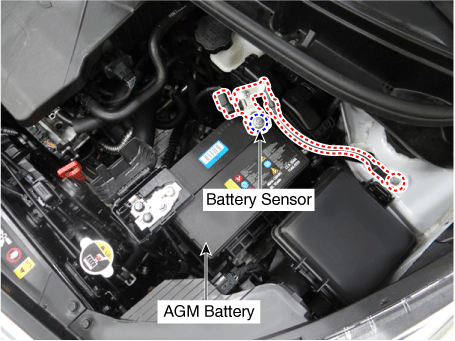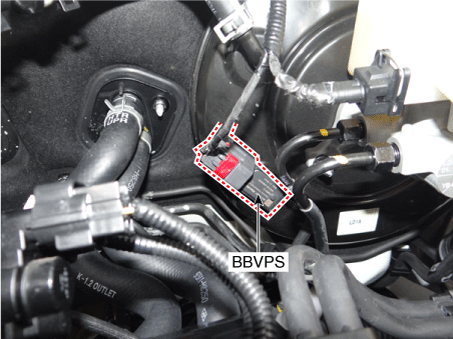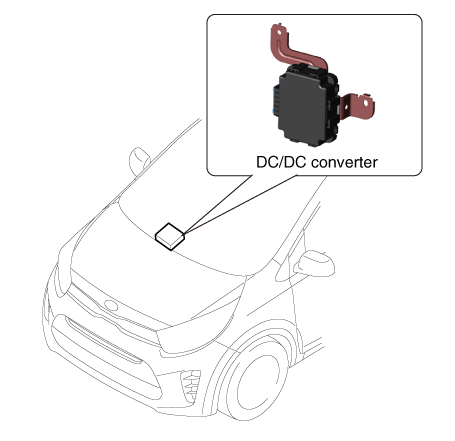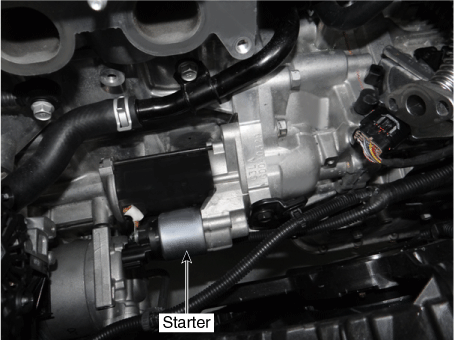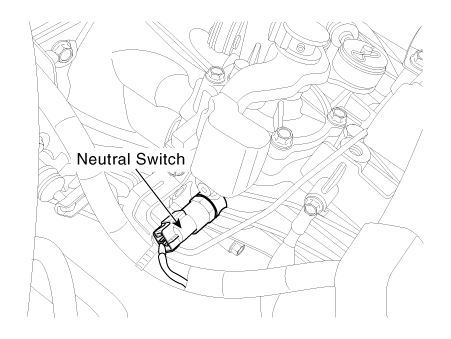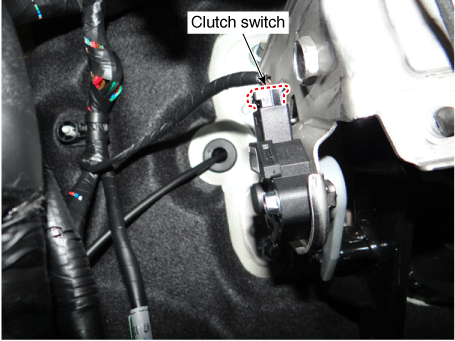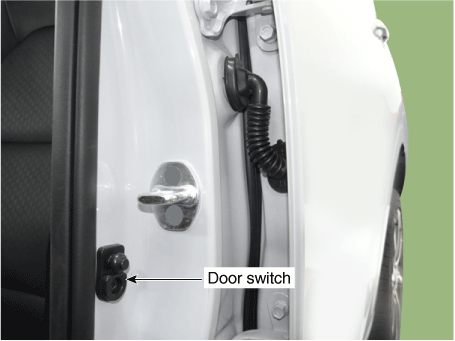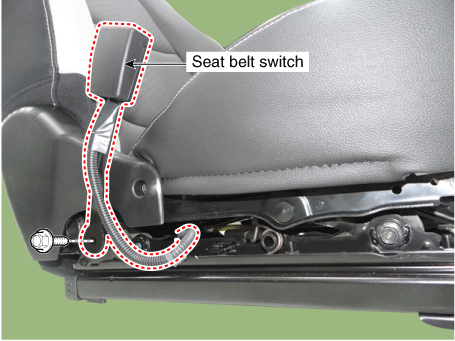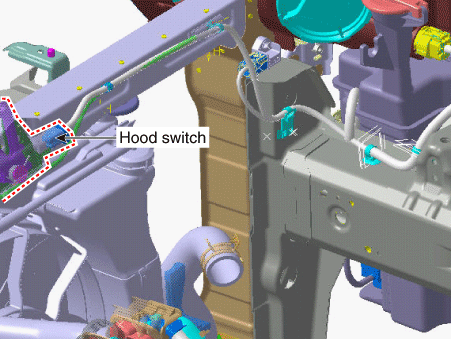Kia Picanto: Engine Control / Fuel System / ISG (Idle Stop & Go) System
Kia Picanto JA 2017-2024 Service & Repair Manual / Engine Control / Fuel System / ISG (Idle Stop & Go) System
Components and components location
| Components Location |

| 1 . Battery sensor 2 . Brake Booster Vacuum Pressure Sensor (BBVPS) 3 . AGM battery 4 . DC/DC converter 5 . ISG OFF switch 6. Alternator | 7. Starter 8. Neutral switch 9. Clutch switch 10. Door switch 11. Seat belt switch 12. Hood switch |
| 1 . Battery sensor 3 . AGM battery | 2 . Brake Booster Vacuum Pressure Sensor (BBVPS) |
|
|
| 4 . DC/DC converter | 5. ISG OFF switch |
|
|
| 6. Alternator | 7. Starter |
|
|
| 8. Neutral switch | 9. Clutch switch |
|
|
| 10. Door switch | 11. Seat belt switch |
|
|
| 12. Hood switch | |
|
Description and operation
| Description |
Idle
Stop & Go (ISG) system switches off the ignition when vehicle is
stopped, and then restarts the ignition and starts the vehicle when
accelerator is pushed. It temporarily stops the engine while waiting for
signal or idling to improve fuel efficiency and reduce exhaust gas
emission. However, ISG system may not operate if engine oil or ambient
temperature is too low, or if 12V battery voltage is too low. The system
can be deactivated by pushing the ISG OFF switch when the driver wishes
not to use ISG system.
Sample scenario: switching off the engine at a standstill at a red traffic light or in a traffic with frequent stops.
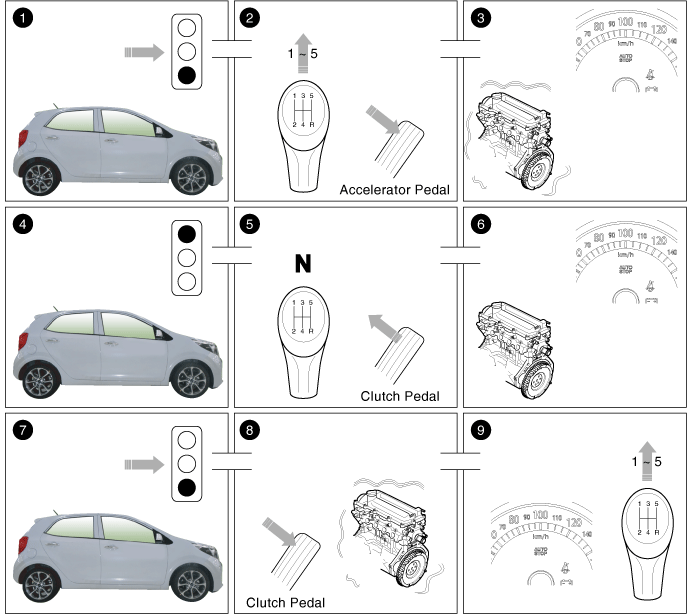
| 1. | Vehicle is moving. |
| 2. | Gear is engaged. The accelerator pedal is pressed. |
| 3. | The engine is running. |
| 4. | The driver brakes until the vehicle comes to a standstill. |
| 5. | The driver engages neutral and releases the clutch pedal. |
| 6. | The engine stops. The symbol "AUTO STOP" lights up in the instrument cluster. |
| 7. | The driver wants to continue the journey. |
| 8. | The driver presses the clutch pedal. The engine starts. |
| 9. | The gear can be engaged and the journey is continued. The symbol "AUTO STOP" goes out. |
Schematic diagrams
| Operating Condition for the ISG function |
After
every engine start, the function is automatically activated on
stand-by. The ISG OFF switch can be used to deactivate the function
manually until the next terminal change. The indication lamp lights up
to confirm pressing of the switch.
| 1. Idle Stop (Idle → Stop) Condition |
▶ Common Condition : Neutral Status & Clutch Pedal Released
|
Conditions Required
| ||
| The engine coolant temperature is not too low (Over 45 degree). | ||
| No DPF regeneration | ||
No inhibitor condition for operating strategy or engine fault
| ||
| Battery charge status is adequately high. | ||
| No communication line error - LIN, CAN | ||
| Vehicle speed is below 5 km/h | ||
| Vehicle speed is over 10 km/h at least once after key start or idle start | ||
| ISG OFF switch off | ||
| Driver
side seat belt, driver side door and hood are
closed.
| ||
| Battery temperature is 2 - 55°C. | ||
| Brake booster pressure is not too low. | ||
| Blower not maximum |
| 2. Idle Start (Stop → Start) Condition |
▶ Common Condition : Neutral Status & Clutch Pedal Pressed
|
Conditions Required
| ||
Inhibitor condition for operating strategy not satisfied or engine fault
| ||
| No communication line error - LIN, CAN | ||
| Driver side seat belt, driver side door and hood are closed. | ||
| Engine stalled, gear position was switched from engaged to neutral and clutch pedal was pressed. |
In case of error in idle stop status, the engine can be started by the key only. |
| 3. Auto-starting (Stop → Start) Condition |
The engine will start automatically without the driver's action if any of the following occurs:
▶ Common Condition : Neutral Status & Clutch Pedal Released
|
Conditions Required
| ||
Not inhibitor condition for operating strategy
| ||
| Brake booster vacuum pressure is low. | ||
| When the battery charge status is low. | ||
| A certain amount of time has passed after the air conditioning is On. | ||
| Vehicle speed is over 5 km/h on a downward inclination. | ||
| Blower maximum |
ISG system deactivated by fault
When the ISG related sensors or system error occurs, the ISG OFF switch lights up. Especially,
when the battery sensor has been replaced or reinstalled, the vehicle
must be placed in ignition OFF for about 4 hours for recalibration. The ISG function will operate normally after 4 hours. |
When the engine is in Idle stop mode, it's possible to restart the engine without the driver taking any action. Before
leaving the car or doing anything in the engine room area, stop the
engine by turning the ignition key to the LOCK position or removing it. |
Troubleshooting
| Troubleshooting |
If the ISG function does not operate in spite of no DTC, inspect the ISG system as below.
The KDS shows the current data about the ISG function for inspection.
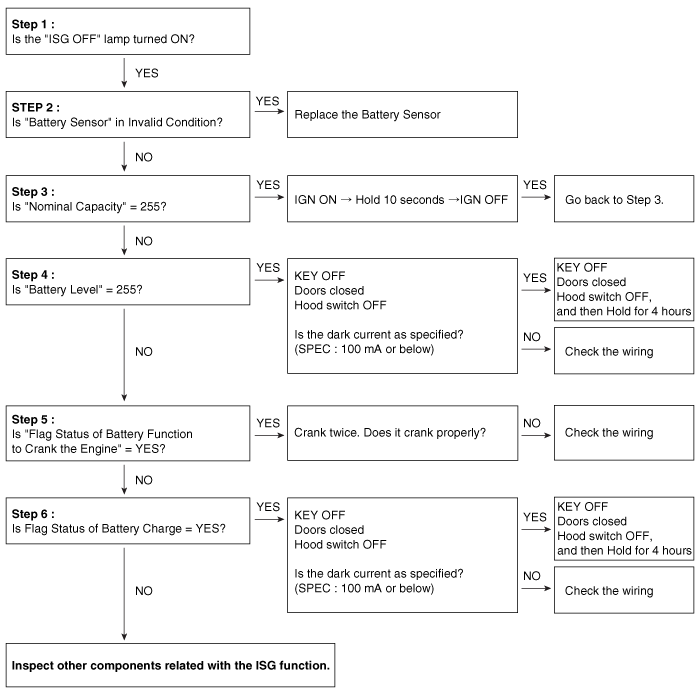
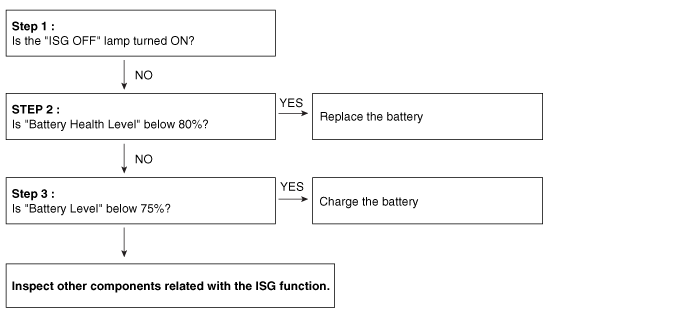
- Battery sensor
- Brake Booster Vacuum Pressure Sensor
- AGM Battery
- DC/DC Converter
- ISG OFF switch
- Alternator
- Starter
- Brake switch
- Door switch
- Seat belt switch
- Hood switch
- Clutch switch
 Fuel Pressure Control Valve (FPCV)
Fuel Pressure Control Valve (FPCV)
Specifications
Specification
Item
Specification
Coil Resistance (Ω) 0.54 [20°C(68°F)] Pin 2 Peak Current (A) 5.3 Hol ...
 Battery sensor
Battery sensor
Description and operation
Description
Vehicles
have many control units that consume electricity. Each unit controls
its own system based on information from various sensors. Hence, a
stabl ...
Other information:
Kia Picanto JA 2017-2024 Service & Repair Manual: Heater Unit
Components and components location Component Location 1. Heater Unit Components [LH] 1. Heater Core Cover 2. Mode Control Actuator 3. Mode Control Actuator braket 4. Mode Cam 5. Mode Cam 6. Heater Core 7. Door Cover [Floor] 8. Heater Case [LH] [RH] 1. Lower Insulatio ...
Kia Picanto JA 2017-2024 Owner's Manual: Operation of the rear parking assist system
Operating condition This system will activate when backing up with the ignition switch ON. If the vehicle is moving at a speed over 5 km/h (3 mph), the system may not be activated correctly. The sensing distance while the rear parking assist system is in operation is approxim ...
Copyright © www.kpicanto.com 2017-2024


